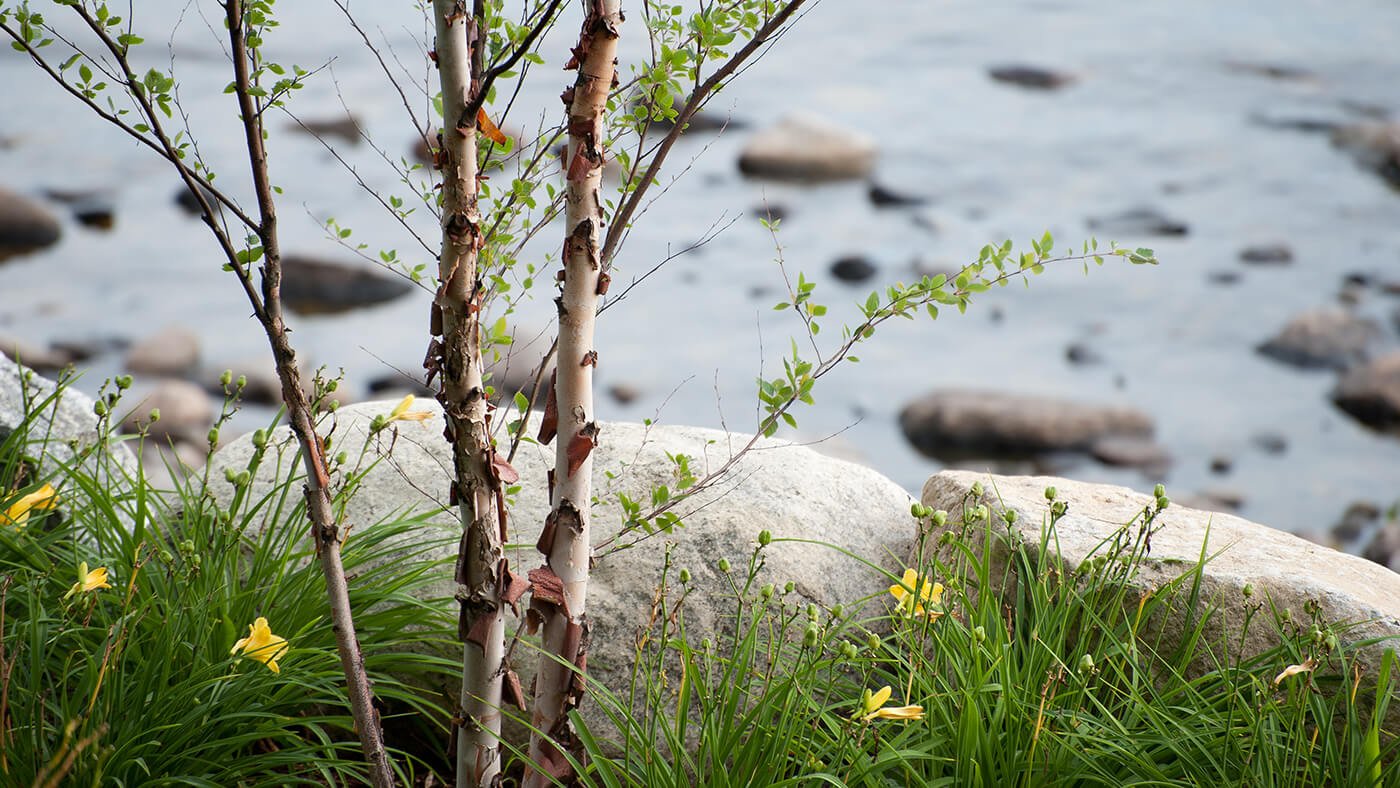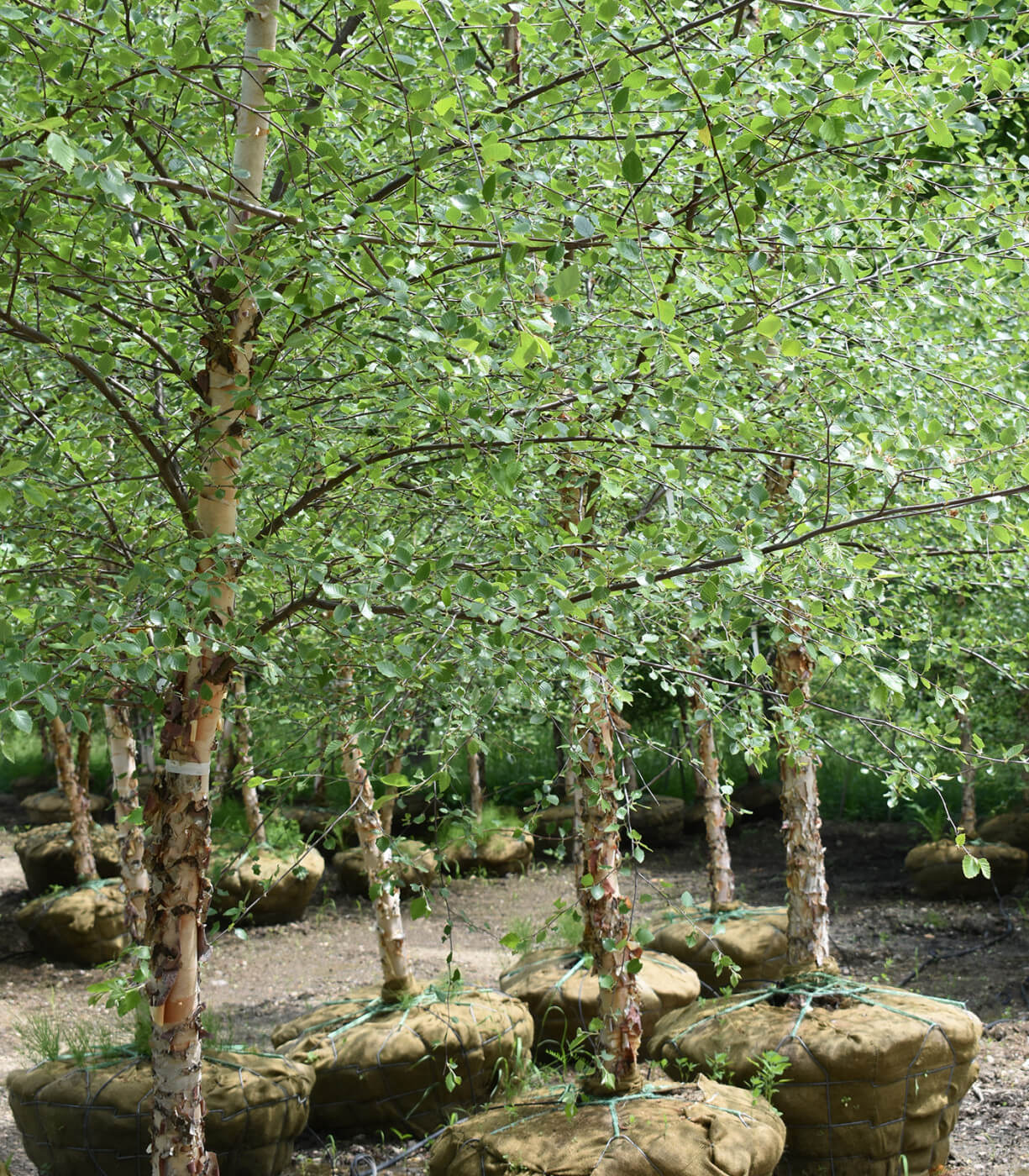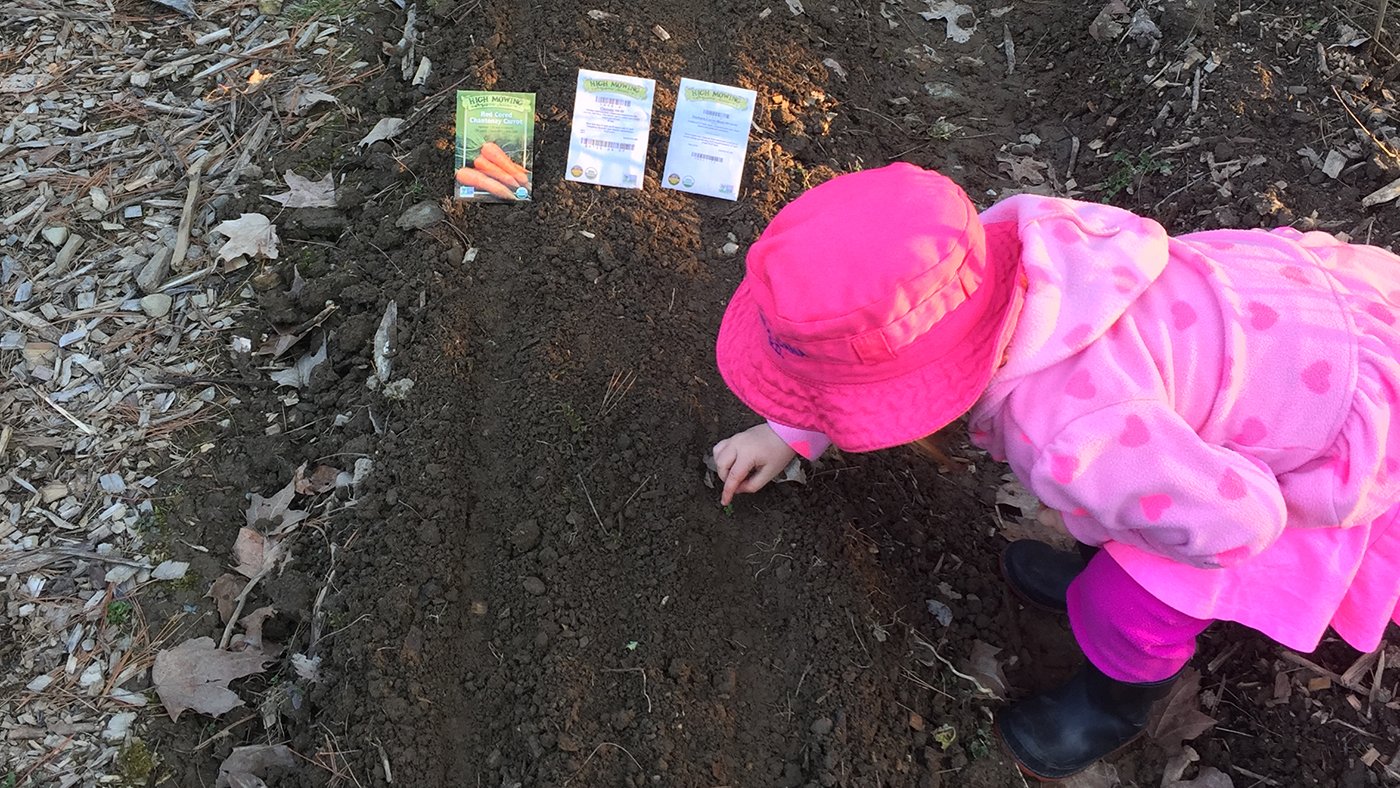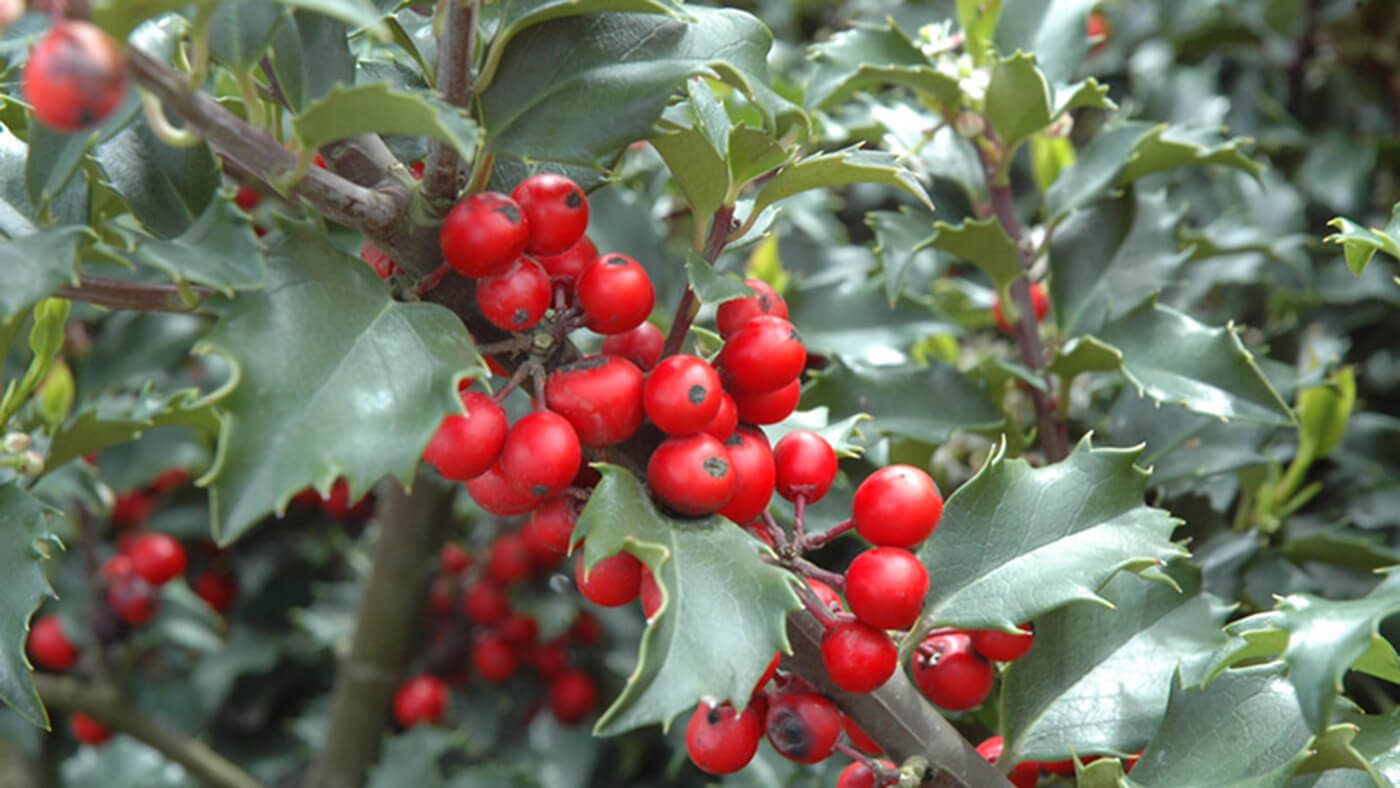
Planting Birch Trees in Vermont
Most people associate birch trees with peeling white bark and New England forests. There are many lesser known, wonderful varieties in addition to traditional paper birch. If you’re thinking about planting birch trees in Vermont this season, it’s helpful to learn their differences and site preferences so they grow into successful plantings.
Treeform vs. Clump
Birches grow in the wild as single lead trees, as well as in thickets or groves. Most varieties at nurseries are grown in tree or clump habits too.



Treeform birch are single lead trees with one main trunk. Clump are created by planting multiple single leads and grown together as one plant. We usually start with five leads and pare down to the three most structural and attractive leads as the tree matures.

Selecting treeform or clump birches depends on the planting space you have and the aesthetic you prefer. Treeform provide the look and benefits of birch while growing less wide. Clump trees have a highly desired look in landscaping and appear more “grove-like”. Though you can also create birch groves with multiple treeform plantings.

Varieties of Birch for Vermont Landscapes
At Horsford’s, we grow birch in containers and in our growing fields so there is a tree for any budget. All of the birch listed below are native either to Vermont, or to New England and New York. We have found excellent success in our own plantings with the following varieties:

Yellow Birch
Betula alleghaniensis - 60-75’ tall
Yellow birch are long-lived native trees to Vermont that generally like moist soils but can handle some dryness once established. They have been chosen less frequently as a landscape species in the past since their bark is not paper white, but they are becoming more popular as gardeners recognize their long-lived nature and beautiful golden, textured bark. Yellow birch have uniform growth and branching, and yellow fall foliage. This species grows to be large so plant with plenty of room.
River Birch
Betula nigra
In the wild, river birch are found growing along stream banks and in swampy bottomlands. They have striking exfoliating cinnamon-brown bark that shapes into plate-like scales as trees mature. This species is the most rugged for tough sites and drought conditions once established. Our landscaper designers frequently select river birch cultivars for their bark aesthetics, quick growth, and adaptability.
‘Heritage’ – 45’ tall, 35’ spread
‘Fox Valley’ - 10-12’ tall, equal spread

Paper Birch / White Birch
Betula papyrifera – 40-60’ tall
Paper birch’s ivory white bark is smooth when mature and peels to reveal reddish brown inner bark. This species is long-lived when sited correctly in well-drained, acidic, moist loams in full sun. It should not be planted in tough or polluted sites. Paper birch boasts fast growth with a pyramidal habit.
'Renaissance Oasis' - 50’ tall
'Whitespire' Birch
Betula populifolia ‘Whitespire’ – 40’ tall
A cultivar of gray birch, 'Whitespire' has smooth, chalky white bark that does not peel like other species. ‘Whitespire’ is a cultivar narrow and pyramidal in form particularly resistant to disease and insect problems. It is tolerant of a variety of soil conditions and sites.
Tricky Siting
We often receive questions about selecting varieties for the following conditions. We recommend these species:
Clay Soil
-River Birch
-Yellow Birch
-Whitespire / Gray Birch
Near Salt Exposure
If your site is along a road where power lines are nearby, dwarf varieties should be selected, or trees should planted an appropriate distance away.
-River Birch
-Yellow Birch
-Whitespire / Gray Birch
Dry Sites
Once trees are established. Newly planted trees must still be watered in.
-River Birch
-Yellow Birch
-Whitespire / Gray Birch
Birches Native to Vermont
-Paper Birch
-Whitespire / Gray Birch
-Yellow Birch
What's in Common
Birches pair well planted near evergreens so long as soil and site conditions are appropriate for all species. Varieties with lighter bark like gray and paper birch really contrast. Birch serve wildlife with food and habitat, especially non-migrating residents like chickadees. Planting any birch tree will add diversity and beauty to the landscape.






